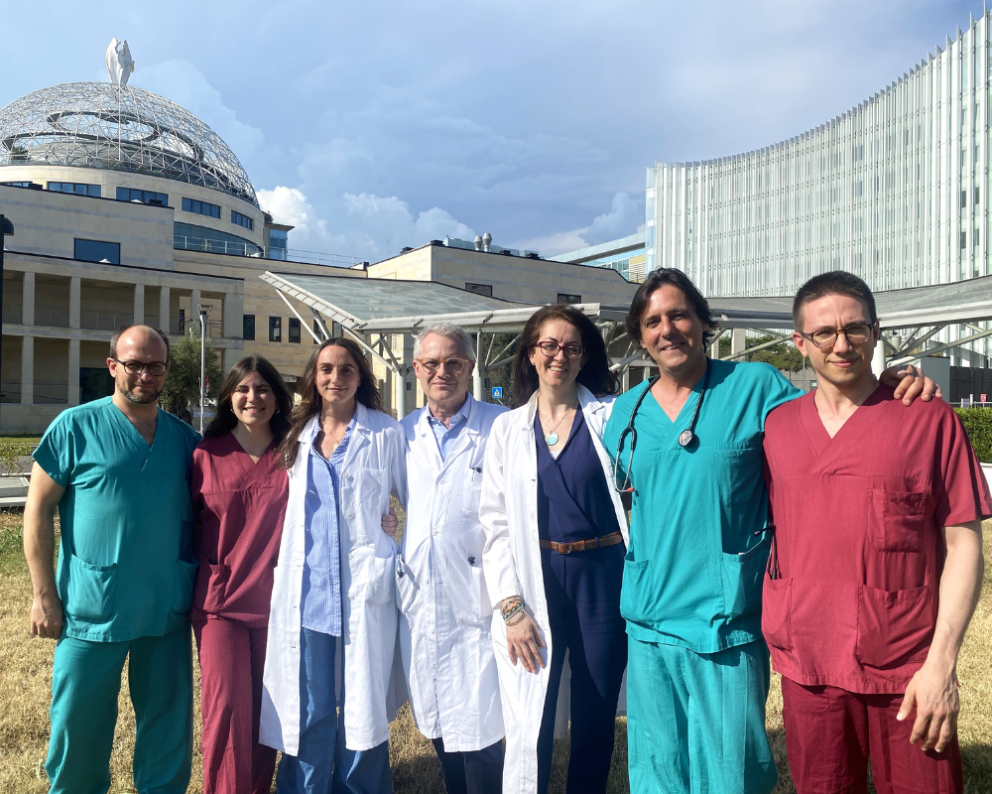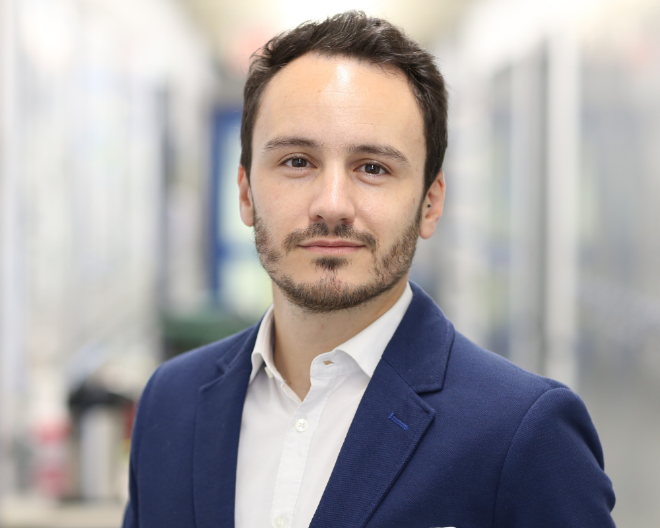New Genetic Mutation Linked to Cardiomyopathy Identified
Discovery Made Through the Analysis of an Entire Community from Southern Italy

A team of geneticists, cardiologists, and neurologists from IRCCS San Raffaele Hospital has identified a previously undescribed genetic mutation in the LMNA gene, associated with cardiomyopathy and neuromuscular disorders, thanks to a genetic-clinical screening involving 234 individuals originally from Caposele.
The results of the study, conducted by IRCCS San Raffaele Hospital in Milan, were published today in the scientific journal Journal of the American College of Cardiology Advances (JACC): Heart Failure. The study identified a new LMNA gene mutation linked to a severe form of cardiomyopathy and to milder but clinically relevant neuromuscular symptoms.
The discovery is the result of a genetic-clinical screening carried out through collaboration among neurologists, cardiologists, and geneticists, involving 234 individuals from a single extended family in Caposele, a small town in the province of Avellino. The analysis identified 30 carriers of the new mutation, representing 12.8% of the study population. All mutation carriers (100%) showed cardiac abnormalities—many of them previously undiagnosed and untreated—and around 43% displayed signs of neuromuscular involvement. In some cases, early diagnosis enabled timely, life-saving interventions, such as the implantation of a defibrillator or referral for heart transplantation.
The screening campaign began in 2022 and concluded in June 2024, with remarkable participation from the local civil and medical communities. The project was led by a team of seven specialists from San Raffaele, coordinated by Dr. Simone Sala, cardiologist and electrophysiologist at IRCCS San Raffaele Hospital, in collaboration with Professor Stefano Previtali, neurologist at IRCCS San Raffaele Hospital and Associate Professor at Vita-Salute San Raffaele University, and Professor Chiara Di Resta, faculty member at the School of Medicine of Vita-Salute San Raffaele University and researcher at the Genomics Unit for the Diagnosis of Human Diseases at IRCCS San Raffaele Hospital.
/resolutions/res-l1920x10000/JACC_Heart_Failure_citizen_science_Caposele_San_Raffaele_identificata_mutazione_genetica_cardio-(2).jpg)
LMNA Mutations and Laminopathies
Lamins are essential proteins that contribute to the structure and stability of the cell nucleus: they form the “inner skeleton” of the nucleus, protecting genetic material and regulating various cellular functions. Mutations in the LMNA gene, which provides the instructions for producing lamins, are diverse and give rise to a group of diseases known as laminopathies.
These conditions are characterized by a wide range of symptoms and signs, including cardiac abnormalities—caused by progressive deterioration of heart function—and neuromuscular issues. Some LMNA mutations are also responsible for rare and severe disorders such as Hutchinson-Gilford progeria syndrome, which causes premature aging in childhood and gained notable attention in Italy thanks to the public awareness efforts of Sammy Basso, a young researcher affected by the condition.
In addition to progeria, laminopathies include familial cardiomyopathies, muscular dystrophies, and other complex neuromuscular conditions.
“The new LMNA mutation identified in our study involves the deletion of a single DNA base, which may result in the production of a non-functional protein,” explains Professor Chiara Di Resta. She continues: “This leads to structural fragility in cells, which over time can develop into dilated cardiomyopathy: the heart becomes enlarged and weakened, impairing its ability to contract and affecting the heart’s electrical conduction system.”
“In all carriers of the new mutation we identified, we observed cardiac involvement. The early manifestations may be mild and easily underestimated, but there is a risk of sudden worsening,” explains Dr. Simone Sala. “These cardiac alterations may involve disruptions in how the heart transmits electrical signals. Initially, they may not cause obvious symptoms but can lead to serious arrhythmias over time.”
Professor Stefano Previtali adds:
“Although the mutation primarily affects cardiac function, it also causes neuromuscular involvement in about 40% of carriers. Manifestations include muscle weakness and motor difficulties, which can vary in severity and onset.”
/resolutions/res-l1920x10000/JACC_Heart_Failure_citizen_science_Caposele_San_Raffaele_identificata_mutazione_genetica_cardio-(3).jpg)
The Story of Caposele
In 2021, a young woman visited Dr. Simone Sala’s clinic at San Raffaele Hospital to investigate some mild episodes of irregular heartbeat. What truly alarmed the doctor, however, was the patient’s detailed family history of sudden deaths: young, seemingly healthy relatives who had died unexpectedly from unexplained cardiac arrest.
“That’s when a lightbulb went off,” recalls Dr. Sala. “This wasn’t just arrhythmia—there was something recurring in this patient’s family, and we had to understand what it was, quickly.”
Due to the specific nature of the cardiac abnormalities, Dr. Sala suspected a form of laminopathy. Geneticist Chiara Di Resta carried out a genetic analysis of the patient and confirmed the suspicion: the woman carried a previously undescribed LMNA gene mutation, which the authors of the study named c.208del.
“This c.208del mutation carries a high risk of malignant arrhythmias and sudden death,” explains Dr. Chiara Di Resta, “but it may also present with mild neuromuscular symptoms. Our top priority was clearly to protect the patient.”
For this reason, and as a preventive measure, Dr. Sala implanted a defibrillator in the patient—a decision that turned out to be life-saving, as the woman experienced cardiac arrest just a few months later.
Shortly afterward, a second patient from Caposele, with a known history of severe cardiac arrhythmias, came to see Dr. Sala and described a similar pattern of sudden deaths in the family, along with relatives affected by limping. This second patient also tested positive for the c.208del mutation.
The man went on to describe how he had reconstructed, together with his cousin—and with the help of the entire local community and descendants of Caposele residents who had emigrated to the United States—a digital family tree of Caposele comprising nearly 3,000 individuals. They gathered information from parish records, old notarial documents, and open-source tools, tracing the lineage back to a common ancestor born in 1689 and successfully reconstructing the family history across 12 generations.
/resolutions/res-l1920x10000/JACC_Heart_Failure_citizen_science_Caposele_San_Raffaele_identificata_mutazione_genetica_cardio-(1).jpg)
Thanks in part to the genealogical reconstructions of Caposele, the San Raffaele team was able to identify living individuals who were potential carriers of the newly discovered mutation.
Leveraging the autosomal-dominant nature of the mutation—meaning that inheriting just one copy of the altered gene is sufficient to develop the disease—the researchers were able to identify at-risk individuals early and invite them to undergo genetic and clinical screenings, which in some cases proved crucial in enabling timely, life-saving interventions.
To further optimize the selection and evaluation of LMNA mutation carriers, the team also used an artificial intelligence algorithm capable of predicting participants’ genetic status based on biometric data, electrocardiograms, and echocardiograms. The model achieved up to 90% accuracy in its predictions. This innovative approach significantly enhanced the effectiveness of the screening process and enabled personalized patient management, supporting early diagnosis and clinical decisions in a genetically isolated context like Caposele.
The response from the local population was extraordinary: more than 90% of those contacted voluntarily took part, making it one of the most extensive genetic screenings ever conducted in a geographically isolated area of Southern Italy.
“At a time when scientific research often seems confined to labs, the Caposele experience flips that idea on its head: here, science was born from the community itself, thanks to the determination and collaboration of an entire population,” say Drs. Sala, Previtali, and Di Resta. “It was the incredible ‘collective memory’ work of the Caposelesi that laid the groundwork for genetic tracing. Entire families came together to take part in testing, meet with physicians, and understand the risks and opportunities of this investigation.
This model of citizen science—where citizens, clinicians, and researchers work together as equals—has shown that knowledge, when shared, can have real impact. The contribution of the community wasn’t just logistical or numerical, but deeply human: it enabled a new way of practicing medicine, one rooted in trust, identity, and the memory of a place.”
You might be interested in
/resolutions/res-c660x528/Pensa_Aorta_Congresso_UniSR-(3).png)
UniSR hosts the launch of the “Pensa all'Aorta” campaign

An ERC Starting Grant assigned to Dr. Davide Folloni

UniSR PhD Courses 2025-2026

